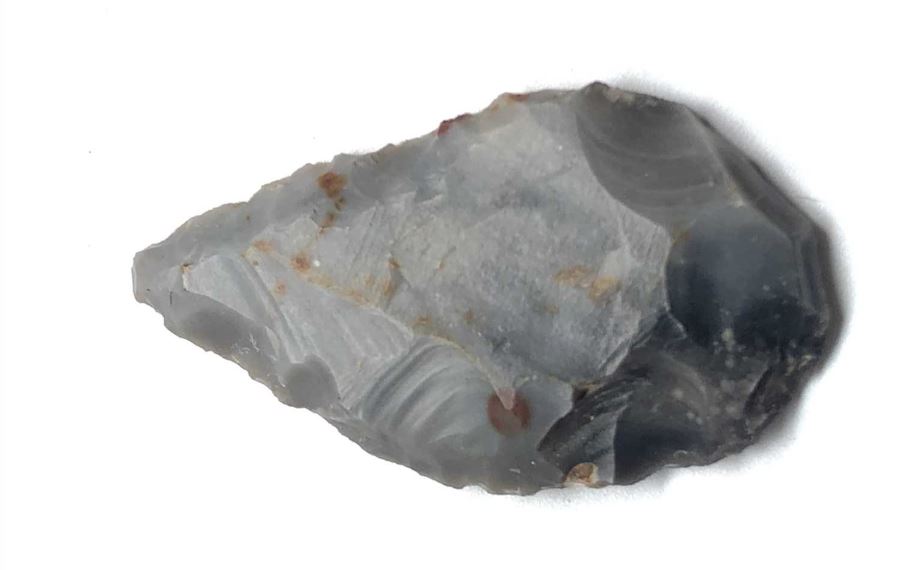© 1996 Stefan Tallqvist
© 1996 The Brotherhood of Man Library
Stefan writes: Dear friends,
On my second visit to Cyprus last month, I wanted to write about an archaeological correlation that might be worthy of notice in which both The Urantia Book description and the archaeological evidence agree quite well. There is a clear correlation in the text of The Urantia Book, UB 80:7.9, and the Cyprus Museum information. The book states:
From all over the fertile crescent the more adventurous peoples poured westward to the islands. These migrants cultivated both grain and vegetables, and they brought domesticated animals with them.
About 5000 B.C. a mighty host of progressive Mesopotamians moved out of the Euphrates valley and settled upon the island of Cyprus; this civilization was wiped out about two thousand years subsequently by the barbarian hordes from the north. (UB 80:7.9-10)

Vassos Karageorghis states in “Cyprus Museum and Archaeological Sites of Cyprus” 1988; on the Cypriot Civilization—Neolithic Period.
“A great and important part of the Cypriot contribution to the history of civilization goes back to the pre-historic times. An already developed phase of Neolithic culture, probably imported from the neighboring countries of Asia, appeared in Cyprus around the beginning of the sixth millennium. More than thirty Neolithic settlements have been identified on the island. But most of our information about life in that period is derived from the settlement of Khirokitia, excavated between 1936 and 1939. The Neolithic inhabitants of this settlement, estimated at four to five thousand, lived in well-built circular huts with thatched roofs within well-organized social groups.”
“The Archaeological Service of Cyprus has excavated a large part of the settlement; the resulting finds give a unique picture of town-planning and architecture in the Neolithic age. The houses, huddled close to each other, consist mainly of a circular room which was also used as a workshop.”
“The inhabitants used to bury their dead under the floors of their houses, or at some point near their dwellings. (In Egypt, houses known as ‘Tholoi’ are still used as burial houses.)”
“The lower part of the walls was constructed of stones, whereas the arched upper part was made of clay and bricks. The inhabitants used to come down the slope of the hill to draw water from the neighboring spring. They hunted, tilled the earth, has already domesticated wild animals, practiced weaving and used soft stones—later clay—to make utensils and figures. They had trade relations with Asia Minor and Northern Syria.”
In April this year (1996), I visited the Khirokitia archaeological site in Cyprus. Here are some passage from the guide: “Khirokitia, a guide to the Neolithic Site.” by A. Le Brun:
“Discovered in 1934, the settlement was excavates between 1936 and 1946. Further investigations were undertaken in 1972 to 1976. According to a number of uncalibrated carbon datings ranging from 5800 to 5500 BC, the island of Cyprus was first inhabited during the sixth millennium BC.”
“The inhabitants of Khirokitia isolated their living space from the outside world with constructions which imply an important communal effort. There are few examples of such edifices in the Neolithic of the Near East. The settlement was inhabited by farmers who cultivated wheat and barley as shown by analysis of carbonized seed materials. Grain was harvested with flint sickles hafted in wood or bone. Only the flint blades have survived. “Saddle querns” placed outside the houses were used for grinding of grain. Meat from deer, sheep, goats, and pigs was provided by hunting and by stock breeding.”
“The tools of the first inhabitants of Khirokitia are made of flint, bone, and stone. As well as the more common utilitarian vessels, there are fine stone bowls which demonstrate the high degree of skill that could be achieved in the Aceramic Neolithic period. All are made of igneous gray-green andesite which was easily acquired from the banks of the Maroni River. Some are decorated with ornaments which reflect a very keen artistic sense. These objects are exhibited in the Cyprus Museum in Nicosia and in the district museum in Larnica.”
“Apart from a remarkable head model in unbaked clay, all other anthropomorphic representations from the site are stylized stone figurines. These provide no indication of the physical nature of the inhabitants. The study of skeletal remains is more useful and indicates that the people were short. The average height was 1.61 m (5ft3ins) for men and 1.50m (4ft11ins) for women.”
“The origins and decline of this highly original culture are still not clearly known. As was the case with all other aceramic sites, Khirokitia suddenly came to an end. It was not until 1500 years later that the site was reoccupied by a ceramic culture.”
Stefan concludes that he finds all of the archaeological information is in good agreement with the Urantia Papers.
The religion of Jesus is salvation from self.(UB 5:4.5)
The truly religious individual seeks to identify the self with the universe and then to dedicate the activities of this unified self to the service of the universe family of fellow beings, human and superhuman. (UB 5:4.3)